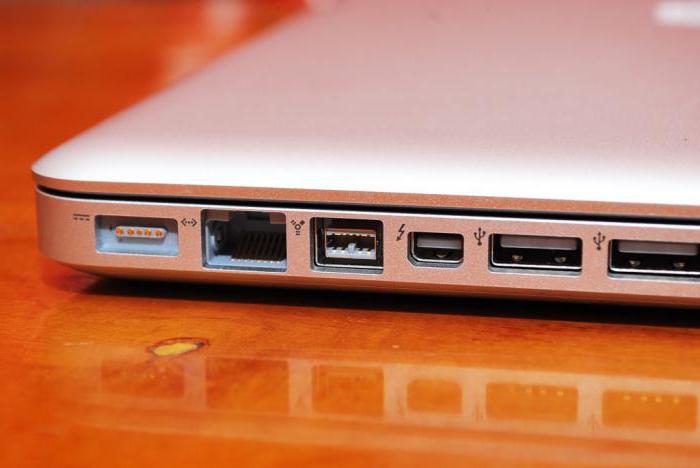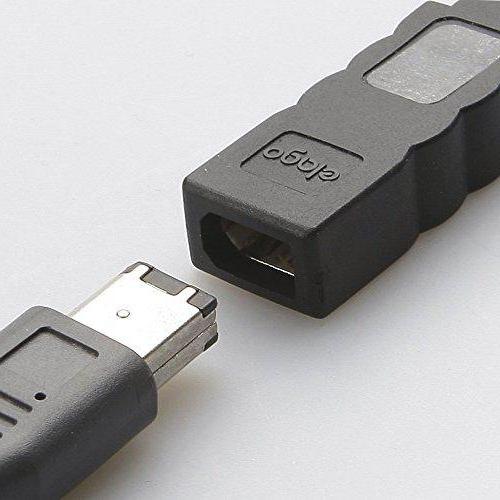Even at the time of the appearance of the first computers supporting serial data transmission, the idea came up to create a single standard for ports and cables that can transmit any information at high speed. During the general pursuit of standardization, the sequential high-speed bus IEEE 1394 appeared, later modified by Apple and renamed FireWire, which was designed to resolve the chaos that reigned in the computer environment 25 years ago.
Despite the fact that FireWire lost the war with USB, this port can still be found in various devices: both in the professional segment and in the consumer (including the music business). In the material below, we will consider FireWire in detail. What is it? Where is it used? And is FireWire needed today?
Firewire: what is it?
FireWire is a specialized interface developed by Apple in early 1992. This is the standard for high-speed data transfer between a computer and other devices connected to it. At first, the FireWire controller was implemented only in Apple computers, but other market players were not long in coming. A year later, a dozen companies and manufacturers of equipment have added the novelty to their gadgets.
The interface was developed and promoted by then-popular IT companies under their own names. Sony called the new standard the name i.Link, and Texas Instruments gave it the name Lynx. The standard still exists, but is no longer popular, as Apple itself came up with a replacement for it in the form of a more powerful Thunderbolt. FireWire controllers are installed in laptops, camcorders, hard drives, printers, and sound cards.
Interface history
The idea of creating FireWire originated in the ranks of the Committee on the standards of microcomputers in 1986. The task was set to combine several standards at once into one single one. Apple took over this burden by introducing FireWire (IEEE 1394) to the world. A few years later, other companies joined in promoting the new standard. Microsoft, for example, insisted that FireWire must be installed in all manufactured computers. Many options for using the new controller were invented, but over time, interest in it faded.
Despite the fact that FireWire is still the most advanced and powerful standard, especially for IT professionals, since 2010, it has ceased to be implemented in new devices, since Apple demanded a fee for each controller installed in another device.
Key Features
- FireWire supports hot plugging. That is, you can change the configuration of the entire bus without turning off the computer and restarting the applications that work with it.
- In the past, it has been argued that FireWire is the fastest data transfer standard. In fact, it was, the port speed reaches 3200 Mbit / s. This is more than USB 2.0.
- Devices equipped with the FireWire standard can communicate with each other without connecting to a computer.
- Firewire cables can transmit multimedia in real time.
- Unlike proprietary standards, an open architecture is used, which means that it can be applied without the use of specialized software.
- There are contacts on the FireWire bus that provide power for low-voltage devices.
- It is possible to connect up to 63 devices at a time.
Firewire Specifications
FireWire ports, depending on the generation, have a number of features:
- IEEE 1394 - This standard was finally adopted and approved in 1995. The first to be armed with the new standard are manufacturers of camcorders, in particular Sony, which began promoting the interface under its own name Link. Despite its positioning, even at that time the controller also came to the taste of those who were involved in the production of portable hard drives. The reason for this was the high data transfer rate. It reached 400 Mbps. The cable length was not more than 4.5 meters.
- IEEE 1394a - In 2000, the standard was updated. The main changes concerned the development of compatibility between different devices. A slight delay was also added to reset the bus. A delay was introduced to protect against factory reset during hot reconnection.
- IEEE 1394b - Another update occurred in 2002. Significantly increased data processing speed. FireWire cables and connectors for their connection have changed. Only the design of the ports has changed. The interface standards remained the same, and specialized compatibility adapters of the old generation FireWire to the new (IEEE 1394b) appeared to support compatibility. The structure of the cables themselves changed, they began to make them from optical fiber. Data transfer rate increased to 1600 Mbps. The cable length has grown to 100 meters.

Connector types
FireWire ports have a few more differences, depending on the generation of the interface. There are options with a different number of contacts, as well as additional batteries:
- IEEE 1394 - this FireWire port does not have its own power and is equipped with 4 contacts. One twisted pair of wires is used to transmit information from device to device and a second twisted pair to receive information from other devices. A similar connector is installed in laptops and camcorders with interface support.
- IEEE 1394a - The updated FireWire controller is equipped with two more pins that are responsible for powering the interface.
- IEEE 1394b is the latest generation of the interface, equipped with two more additional contacts for transmitting and receiving information, as well as a backup contact.
Sound cards Firewire
DJs and musicians are big fans of the IEEE1394. One of the most popular uses for the FireWire interface is the music business. This standard has all the necessary specifications for working with musical instruments, sound cards and mixers. The interface supports simultaneous parallel operation with 52 channels. IEEE1394 has high bit depth and sample rate.
To implement all the features of the interface, a series connection of several sound cards at once is applied, one after the other, on a single bus (up to 6 sound cards). This is necessary if you are already the owner of a sound card for 8 channels, and you do not have enough of this, then you can attach a few more cards. Some sound cards, such as the MOTU Traveler MK3, are initially designed with an eye to further integration and expansion.
Comparison with USB-Audio
FireWire is ideal for portable sound cards, and this is despite the fact that in most cases, sound cards with FireWire support are more expensive, while USB cards are more affordable. An important advantage is the same data rate. At FireWire this indicator is much higher, which means that this interface is ideal for use during live performances, where it is important to work without delays and “sticking”. USB in this regard is not so good, since working with it can cause problems with a noticeable delay in the signal (from the instrument to the device for outputting sound).
A serious drawback of sound cards supporting only the FireWire controller is a long and complicated setup. Optimizing a large set of devices and making them work together is very difficult. With USB-Audio, such problems do not arise, since they all support the quick setup function. It is enough to connect it to the computer, as everything immediately starts working.
But USB does not support hot-swappable devices. Earlier there were also problems with reconnecting the sound card. If you disconnect the USB-card while working in the computer virtual studio, then most likely it will immediately forget about it, and when connected, you will have to restart the application through which you shot the sound and configure the entire system again. In the case of FireWire this will not happen. In fairness, it should be noted that this problem bypasses computers running Mac OS, where sound is tied to Core Audio.
Other applications
Oddly enough, FireWire, being a network port, was involved not only in the field of data transmission over a network and audio, but also in many others.
- In external memory drives - in the past, FireWire could often be found in external media, which was promoted by the high speed of the standard. The speed of the controller was higher than that of USB 2.0, therefore such hard drives were popular in the professional field.
- Network Connections - UNIX operating systems such as Mac OS and Linux still support FireWire, where it can be used to transfer data over the Internet. Microsoft abandoned this feature with the release of Windows Vista in 2005.
- It’s ironic in cameras , but it’s the very first FireWire application that is still in use and remains quite popular. On the market you can still find many cameras, the video stream from which is transmitted via FireWire cables.
- In iPod - there were versions of a portable player in which music was charged and synchronized using FireWire. With the release of iPod nano 4th generation, Apple decided to switch to USB. Nevertheless, for a long time it was possible to find FireWire-adapters for iPod and iPhone.

Instead of a conclusion
Today, FireWire is not widely used. Applications that were popular in the past, such as connecting hard drives and debugging devices, are no longer quoted. Yes, and it is unlikely to find modern gadgets that support this standard. FireWire has remained the destiny of professionals and will die there. The only thing that the FireWire standard is suitable for today in terms of consumer use is the simultaneous connection of a large number of sound cards, which many DJs and sound engineers dream about. Actually, paying attention to the FireWire-enabled sound card itself is for those who need high-speed signal processing, and those who record a signal from more than 18 audio channels. All other options for using FireWire both in sound and elsewhere are not relevant.